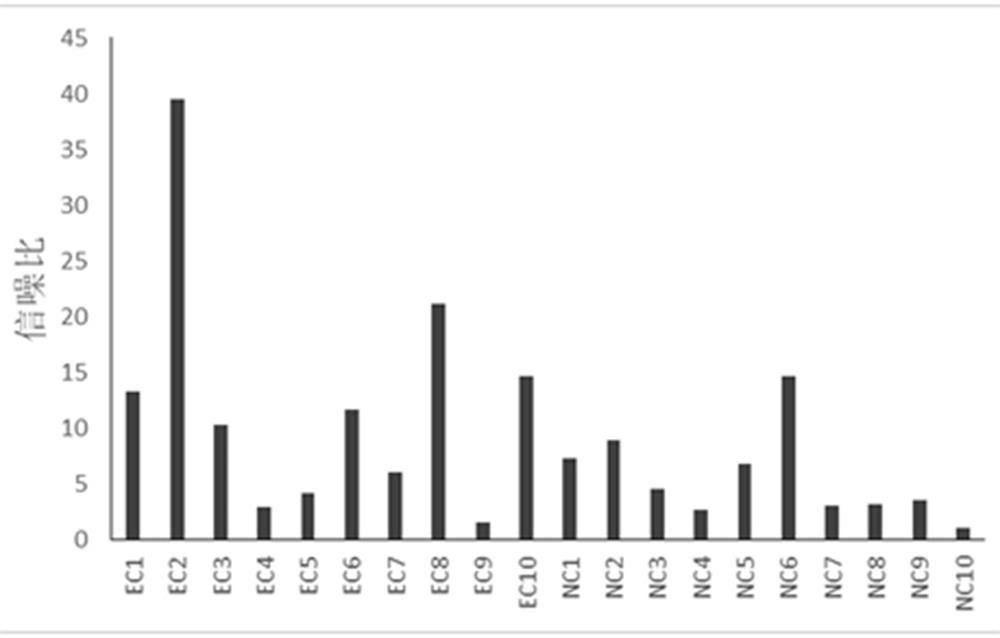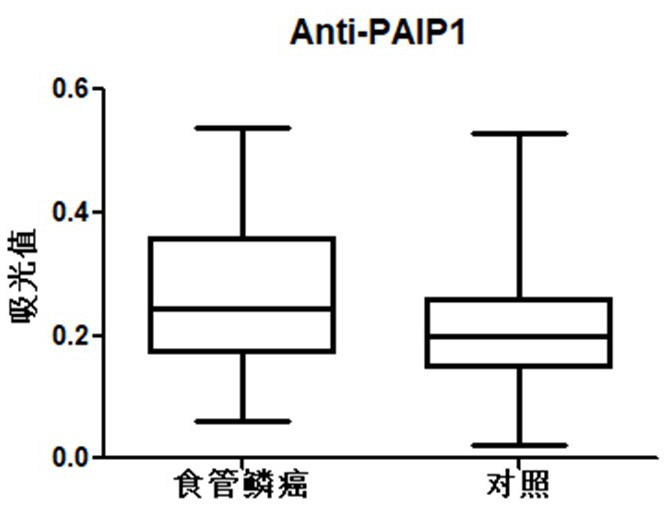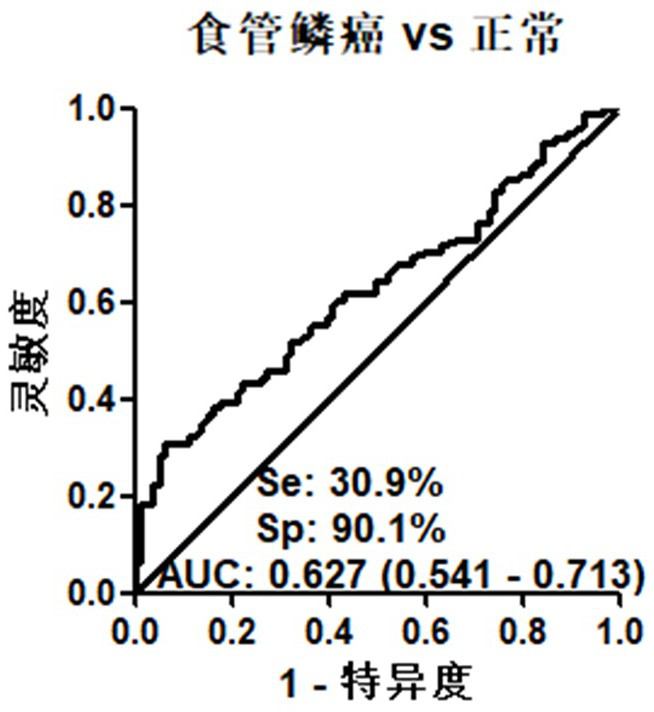Application of PAIP1 autoantibody in auxiliary diagnosis of esophageal squamous carcinoma
A technology for auxiliary diagnosis and esophageal squamous cell carcinoma, applied in the field of medicine and biology, it can solve the problems of high markers, lack of specificity and sensitivity, and achieve the effect of reducing mortality and avoiding invasive diagnosis.
- Summary
- Abstract
- Description
- Claims
- Application Information
AI Technical Summary
Problems solved by technology
Method used
Image
Examples
Embodiment 1
[0034] Example 1: Using human proteome chips to screen markers for the diagnosis of esophageal squamous cell carcinoma
[0035] 1. Experimental sample:
[0036]The sera of 30 patients with esophageal squamous cell carcinoma (esophageal squamous cell carcinoma group) and 24 normal subjects (normal control group) were collected from the specimen bank of the Henan Provincial Key Laboratory of Cancer Epidemiology; among them, the serum of 30 patients with esophageal squamous cell carcinoma came from Patients with esophageal squamous cell carcinoma confirmed by pathology without any treatment; 24 normal human serums were obtained from healthy subjects, and the inclusion criteria for healthy subjects were: no cardiovascular, respiratory, liver, kidney, gastrointestinal tract , endocrine, blood, mental, or nervous system diseases and the history of the above diseases, no acute or chronic diseases, no autoimmune diseases, no evidence of any tumor-related; moreover, 30 patients with es...
Embodiment 2
[0055] Example 2: ELISA detection of serum expression levels of autoantibodies against tumor-associated antigen PAIP1
[0056] Enzyme linked immunosorbent assay (ELISA) was used to further detect the expression level of anti-PAIP1 autoantibodies in the plasma of large sample population.
[0057] 1. Experimental sample:
[0058] The samples of 160 patients with primary esophageal squamous cell carcinoma (esophageal squamous cell carcinoma group) and 229 normal controls (normal control group) included in this study were all obtained from the specimen bank of the Key Laboratory of Cancer Epidemiology in Henan Province; among them, 160 cases The serum of patients with esophageal squamous cell carcinoma was obtained from patients with esophageal squamous cell carcinoma confirmed by pathology without any treatment; the serum of 160 normal people was obtained from healthy subjects, and the inclusion criteria for healthy subjects were: no cardiovascular, respiratory, Liver, kidney, g...
PUM
 Login to View More
Login to View More Abstract
Description
Claims
Application Information
 Login to View More
Login to View More - R&D
- Intellectual Property
- Life Sciences
- Materials
- Tech Scout
- Unparalleled Data Quality
- Higher Quality Content
- 60% Fewer Hallucinations
Browse by: Latest US Patents, China's latest patents, Technical Efficacy Thesaurus, Application Domain, Technology Topic, Popular Technical Reports.
© 2025 PatSnap. All rights reserved.Legal|Privacy policy|Modern Slavery Act Transparency Statement|Sitemap|About US| Contact US: help@patsnap.com



